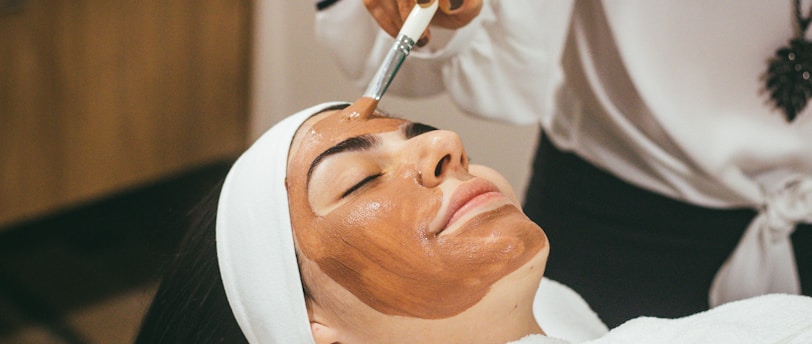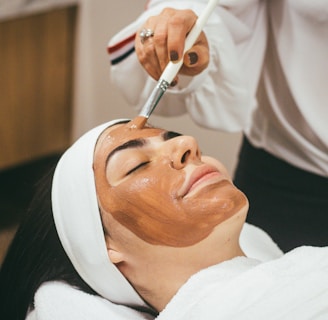Defining and Understanding Your Ideal Client: A Guide for Beauty Business Owners
Targeting the right audience is the key to growth and customer satisfaction in your beauty business. It allows you to tailor your services precisely, meet specific needs, and stand out in a competitive market.


Introduction.
Welcome to the essential guide every beauty business owner needs: identifying and understanding your ideal client. Knowing who your ideal client is, is not just beneficial—it's a necessity for your business’s success. This understanding shapes everything from your service offerings to your marketing strategies, ensuring you connect with the right customers every single time.
Why focus on this? Targeting the right audience is the key to growth and customer satisfaction in your beauty business. It allows you to tailor your services precisely, meet specific needs, and stand out in a competitive market.
In this blog, i'll break down the process of defining your dream client. You'll learn why it's important, how to gather the necessary information, and ways to apply this knowledge to enhance your beauty business.
Characteristics of an Ideal Client in the Beauty Industry.
Identifying your ideal client goes beyond basic demographics. It's about understanding who they are, what they value, and how they interact with the beauty world. Here's what you need to consider:
You need to take into account demographic factors including: Age, Gender, Income Level, Location: These basics help you narrow down who is most likely to seek your services. For example, a luxury salon in a city centre might target a different demographic than a solo salon business in a small town area.
Psychographic Factors will play a big factor in building your ideal client. factors such as: Values, Interests, Lifestyle: Understanding your clients' values and lifestyle can help you tailor your marketing messages and service offerings. For instance, eco-conscious clients might prefer sustainable beauty products and practices.
Look at your ideal clients Skin Types, Beauty Routines, Product Preferences: Every client's beauty needs are unique. Knowing whether your ideal client seeks anti-aging treatments, vegan products, or quick grooming services allows you to cater to those specific desires.
By combining these characteristics, you create a detailed profile of your ideal client. This doesn’t mean you’re excluding potential customers outside this profile, but it does mean you’re focusing your efforts where they count the most. This approach leads to more satisfied customers and a stronger position as the expert.
Researching Your Ideal Client.
Effective research is the foundation of understanding your ideal client. Here’s how to get the insights you need:
You need to conduct market research, which include: Surveys, Interviews, Focus Groups: Direct feedback from potential or existing clients provides invaluable insights. Use surveys to gather data and interviews or focus groups for a more in depth look. Ask about their beauty routines, product preferences, and service expectations.
Utilize Social Media and Online Analytics
By looking at social media and online analytics will give you insight in to behavioral insights: Social media platforms and Google Analytics offer a goldmine of information about your audience's online behavior, preferences, and engagement patterns. Analyse which posts they interact with the most, the times they are active, and the content they share or comment on. You need to make sure you are doing a insight analysis at least once per month to see what is working for you. Check Out my free analysis ebook here.
Competitor Analysis
You can gain a competitor advantage by identifying gaps in the market: Look at your competitors — what they offer, their client base, and how they communicate. This will help you spot opportunities to differentiate your business and cater to unmet needs in your target market.
Gathering this data will give you a clearer picture of who your ideal client is, what they value, and how you can serve them best.
Creating Client Personas.
Once you've gathered data on your ideal client, it's time to bring this information to life through client personas. Here’s how to craft them:
Step 1: Compile Key Information
Gather all your research and list out the most common demographic and psychographic characteristics. Include details like age range, interests, beauty habits, and any specific needs they have regarding your services.
Step 2: Segment Your Audience
If you notice distinct groups within your data, segment them. For example, one persona might be career-focused individuals looking for quick and efficient beauty services, while another could be environmentally conscious clients preferring sustainable products.
Step 3: Create Detailed Personas
For each segment, create a detailed persona. Give them a name, a job, lifestyle habits, beauty preferences, and challenges they face in finding the right beauty solutions. The more detailed, the better. This helps in visualizing them as real people with specific needs.
Step 4: Tailor Your Services and Marketing
Use these personas to examine how your business can meet their needs. This could involve introducing new services, adjusting your marketing strategy, or even altering your communication style to better engage these clients.
Example of an Effective Beauty Client Persona
“Eco-conscious Emma”: A 30-year-old environmental advocate who values sustainability above all. She prefers beauty salons that use organic products and have green practices. Her beauty routine is minimalistic, focusing on skincare over makeup.
Creating detailed client personas allows you to humanise your marketing and service strategies, making it easier to connect with your target audience on a personal level. It's not just about selling beauty services; it's about providing solutions that resonate with the individual needs and values of your clients.
Maintaining Relationships with Your Ideal Clients.
Attracting your ideal clients is just the beginning. The key to long-term success in the beauty industry is building and maintaining strong relationships with them. Here’s how you can keep your clients coming back:
Make sure you are delivering consistent quality. Ensure that every service and interaction meets or exceeds the high standards your clients expect. Consistency in quality is crucial for building trust and loyalty.
By personalising client experiences you can recommend products or services based on past purchases, and greet them by name to make them feel valued.
Building a community around your brand by engaging with clients on social media, hosting events, or running workshops will boost your business relationships. This engagement should extend beyond just selling and focus on creating value for your clients.
Encouraging repeat business by rewarding clients for their loyalty will keep your clients coming back for more. This could be through a points system, discounts on birthdays, or exclusive access to new services and products.
Keeping in touch with your clients through email newsletters, social media updates, and personalised messages will show the personal touch to your clients. Share useful beauty tips, news about your services, and exclusive offers to keep your brand top of mind.
Ensure every client interaction, from booking to follow-up, is smooth, friendly, and professional. Excellent customer service can turn a one-time client into a lifelong advocate for your business.
The beauty industry is constantly changing, and so are your clients’ needs and preferences. Stay informed about trends and be willing to adapt your services and business practices to meet these evolving demands.
By focusing on maintaining strong relationships with your clients, you not only foster loyalty but also create a network of advocates who will spread the word about your business. This approach not only retains ideal clients but also attracts new ones through positive word-of-mouth.
Identifying and understanding your ideal client is more than just a step towards targeting your marketing efforts—it's the cornerstone of building a successful beauty business. From tailoring your services to crafting messages that resonate, every decision you make should be informed by the needs and preferences of your ideal client.
Remember, the beauty industry is dynamic, and so are the desires and needs of your clients. Continuously refining your understanding of your ideal client and adapting your strategies accordingly is key to staying relevant and loved.
By focusing on your ideal clients, you're not just selling beauty services; you're providing value, building community, and enriching lives. And there’s nothing more beautiful than that.
If you're really interested in growing your business and want to be in the know, you should definitely take a look atThe Beauty Business Toolkit. When you do, you'll get all sorts of useful tools like, how to set up your business for success, how to add more revenue with daily and weekly activities, and super helpful masterclasses from experts.
i'm all about building this awesome community where people who love beauty – whether you're a pro or just really into it – can learn, grow, and inspire each other.
Also, make sure you're keeping up with us me on social media too! Follow me, like and comment on my posts, and join in on my beauty business conversations.


